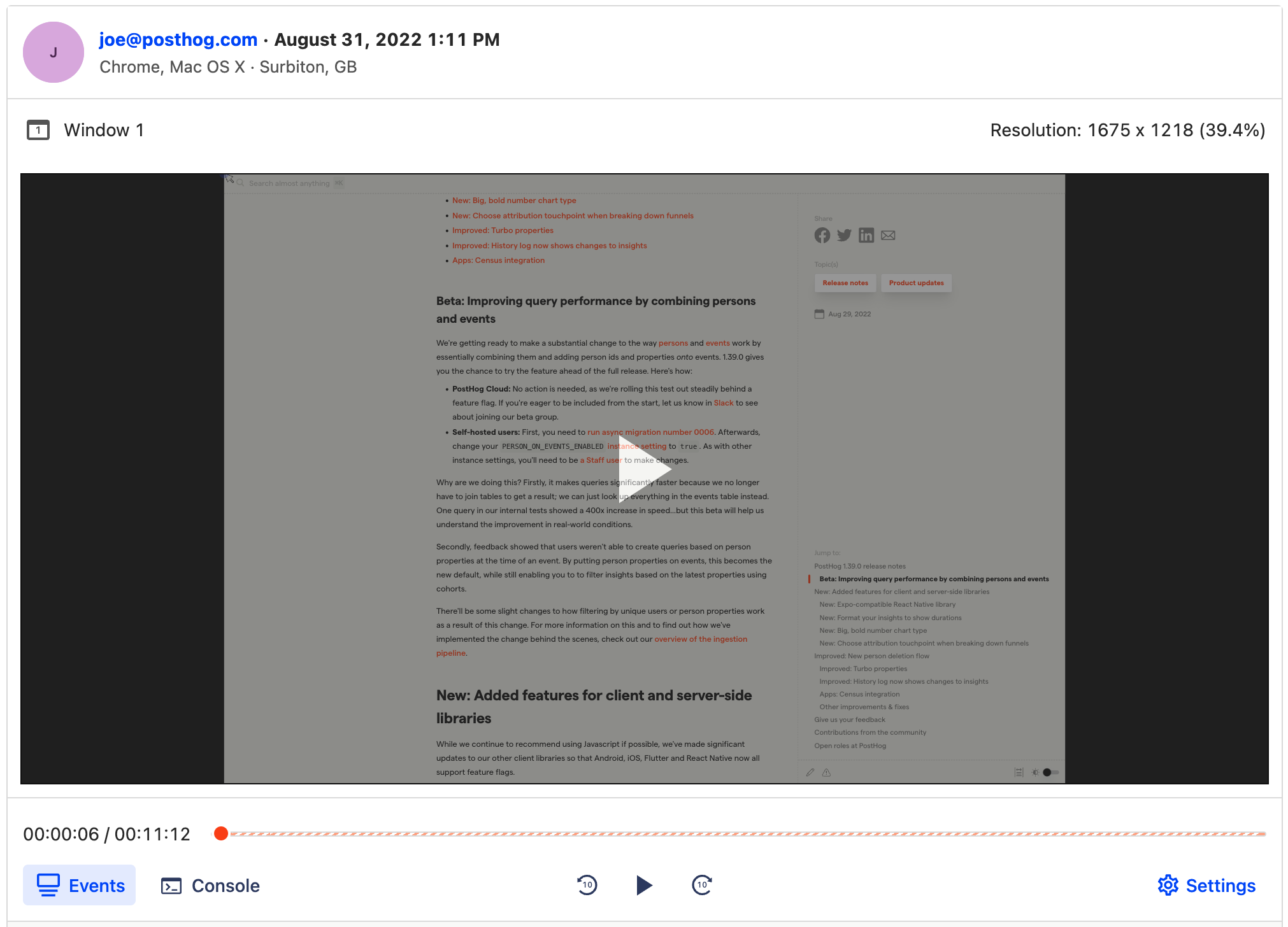How (and why) to track your website with PostHog
Oct 10, 2022

PostHog may have been built for product analytics, but that doesn’t mean you can only deploy it on your core product — you can also use it to gather analytics from your marketing website too. Internally at PostHog this is exactly what we do, tracking analytics from both the product and this very website within a single project.
Using PostHog to gather analytics in this way isn’t just an excuse for us to ‘dogfood’ our own product. It’s also a best practice that we strongly recommend to other organizations for several reasons...
Want to track your website with PostHog? Check out our web analytics tool, or get started straight away by integrating PostHog immediately!
1. Get better data
Web analytics tools, such as Google Analytics, are all well and good — but if your tracking stops as soon as a user logs in to your platform then can you really track their entire user journey?
Deploying PostHog across both your website and product enables you not only to track their entire journey, but also to unlock important insights into how your marketing site is performing. You can compare pageviews to purchases, for example, to understand your conversion rate with a funnel insight — and you can use a path insight to visualize that journey completely.
Ultimately, PostHog can do almost everything that Google Analytics can do and more. And, speaking of Google Analytics…
2. Simplify your stack (and get rid of Google Analytics)
Reducing your stack can have a few overlooked benefits, including greater data consistency. No two analytics tools are the same and each can be impacted by adblockers differently – so if you’re using Google Analytics on your website and PostHog on your product then it can be tough to get comparable results.
Even if data consistency isn’t a concern, there are still plenty of reasons to consider moving away from Google Analytics. Recent GDPR rulings within the EU have bought the legality of Google Analytics into question, for example, and prompted many organizations to look for a self-hosted alternative.
Worried about GDPR but don’t want to self-host? We recently, we offer PostHog Cloud EU where all your data (and the product itself) is hosted in the EU, making it the perfect alternative to GA4.
Need analytics hosted in the EU?
3. Session recording and more!

We’ve built PostHog to be an all-in-one product analytics platform that, unlike tools such as Amplitude or Mixpanel, doesn’t force you to use other tools to plug feature gaps. Using PostHog across your marketing site therefore enables you to benefit from these tools, including session recording, heatmaps and apps.
Session recording in particular is useful on a marketing website, as it lets you filter by events to find actual recordings of users who complete certain actions. Want to literally watch how a successful lead differs from an unsuccessful one, or how users navigate your documentation? Now you can.
Apps too are an important part of the PostHog-for-websites toolkit, enabling you to shape, filter and enhance user data as it is ingested before exporting to other platforms. Marketing teams in particular can benefit from the ability to sync PostHog with other tools in their marketing stack!
How to track website traffic with PostHog
If you’re on board and want to move ahead with tracking your marketing site with PostHog, it couldn’t be easier. All you need to do is copy the snippet below (which is also available in the ‘Project settings’ of your PostHog instance) into your website’s HTML. Ideally, put it just above the </head> tag to get the best results.
It’s worth noting that you’ll need to add this snippet to all pages you want to track, and that the snippet above uses Javascript. Don’t want to use Javascript? There are plenty of other options!

Subscribe to our newsletter
Product for Engineers
Practical tips on becoming a better engineer and building successful products. Read by 25k founders and engineers.
We'll share your email with Substack
